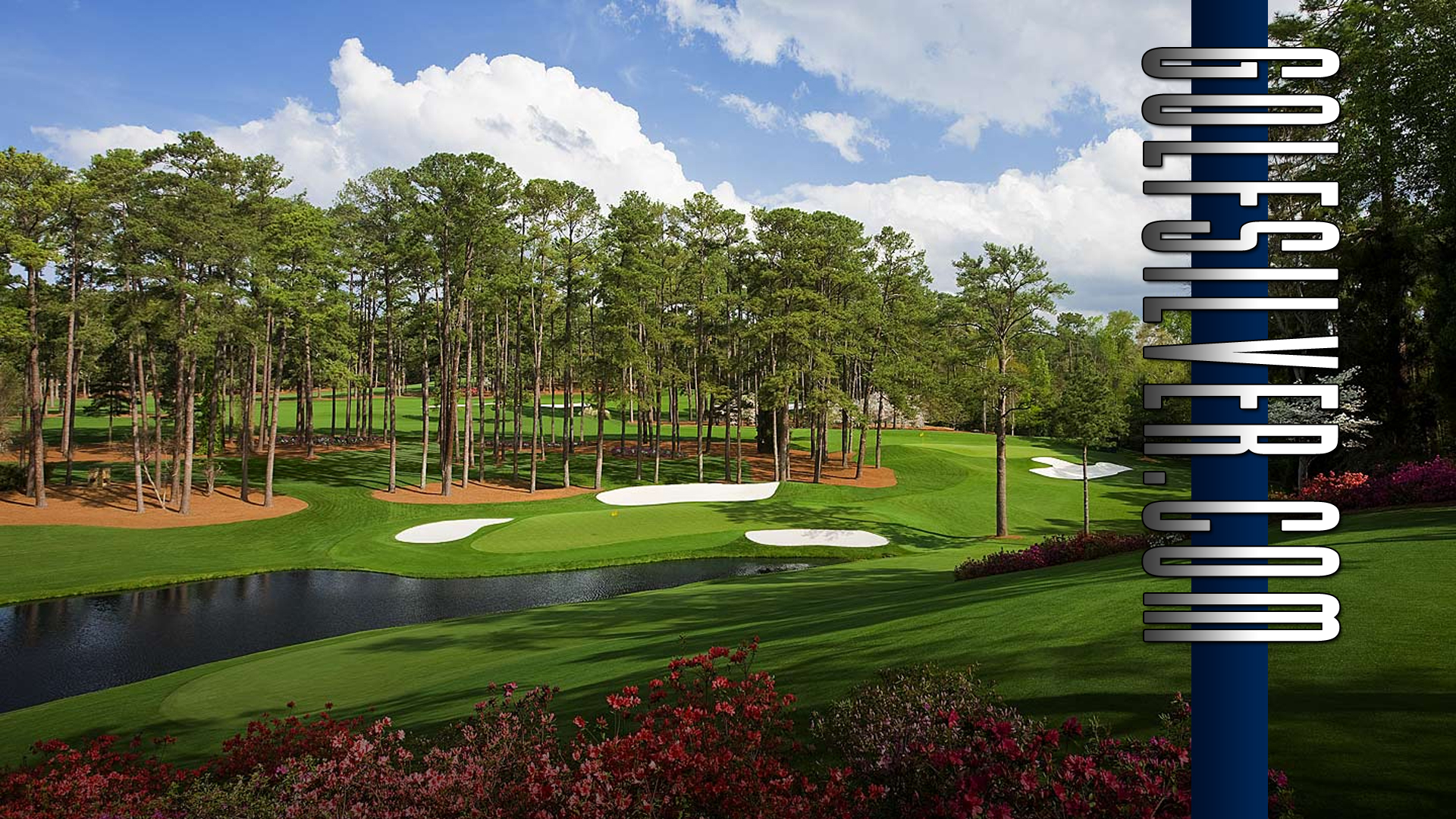
Sam's K legs |
Sam Snead said:
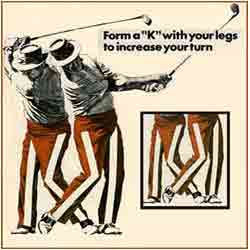
|
"To increase your turn, make your left hip and left shoulder turn together on your backswing. Do it rather slowly and keep your hands and arms light."
"As you turn away form the ball, let your left knee swing inward to the right so that your legs form a K."
|
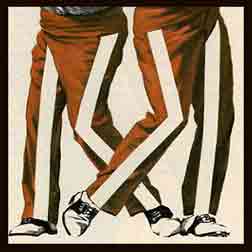
|
"Then start your downswing with your right knee swinging to the left to form another “K” in the opposite direction."
|
|
"Try to do all of this easily without swinging too hard. You don’t want to give up the accuracy what you gain in distance."
|

|
Return to Helpers lists |
Greenside rough |
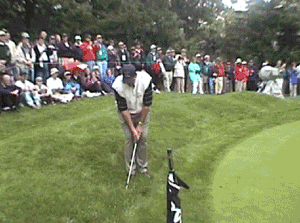
Greenside Rough
We don’t know exactly what kind of lie Tom Lehman's ball has drawn, or where the pin is, but it doesn’t look easy.
- Practice your chipping/pitching strokes more so that pre-shot visualization can be created on the golf course.
|
What is needed?
- descending stroke
- consistent swing motion-
What to do:
- Play ball position for a decending stroke, usually towards center or back of stance.
- Think high loft club, 55 to 60 degree wedge.
- Have a “handle-end always ahead to clubhead end” attitude until after impact.
- Grip firm, not tight. Wrist flexible, back arm always "thrusting" energy downward-forward (important).
- Weight started and "kept" on front leg during shot will provide the power/force.
|
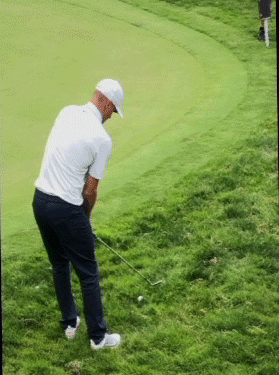
|
For deep rough lies, Open club face at address, try and keep open club's face thoughout swing, weight on front leg throughout, hit behind ball 6 to 8 inches, use highest loft club (sand wedge?), let design of wedge to the work!
|
|
Return to Helpers lists |
Handle-Shaft-ClubHead |
|
When I explain that good Impact is Handle end first, then the Shaft, then the Clubhead, most students say “of course”!
But, when they go to swing at the Ball, the opposite often happens.
Why?
Because most of us know that the Club's head is going to hit the Ball, it’s just human nature, common sense taking over.
Jim is a single digit handicap player, which means he’s a very good golfer. He clearly knows that the Clubhead “lags” on most shots. The Shaft is leaning slightly forward (towards target, pointing up towards leading shoulder complex), so the Handle has to lead for that to happen.
Right?
Trouble is, an inch “feels” like a foot!
|
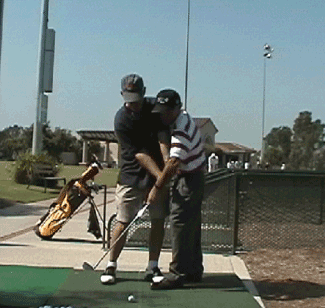
|
This day I was trying to get Jim to go a little more forward at Impact, so I grabbed his club and put it where I wanted it at Impact. The ball was hit very solid and went a fair distance for a somewhat half swing.
Jim immediately felt the difference; I saw a light turn on in his eyes. All he needed was that extra inch to get the Handle/Hands to lead a little more past the ball at Impact. That little extra inch made a difference for him. He’s a low handicap player, but the principle applies to all players. Beginner or advanced golfer.
|
Return to Helpers lists |
Relaxed Back Leg |
|
Good Pivot conditions involve practicing / repeating motions so when you are on the golf course you can trust that training and let it (pivot-body) PARTICIPATE with our arm swings.
A relaxed, somewhat "looking" straight back leg is a part of those conditions. Some turn sharply on back swing, while others allow weight to transfer back to move forward.Whatever condition (slightly bent back leg) you start with at set-up should stay throughout swing. So,we don't want leg to "pop-up/out" or "bow-out", just stay as you were before swing.
So, look -look- look in a mirror while swinging until the condition(s) become a Feel.
|
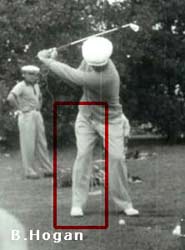
Notice leg/knee slightly bent like address.
|
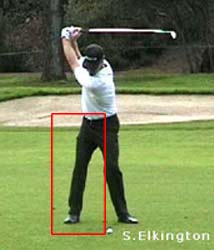
Should be a somewhat "looking" straight leg.
not "bowed-out" or "popped-up".
|

The leg should feel relaxed, slightl bent, on backswing.
|
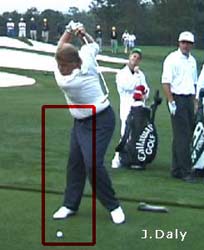
Feel weight on inside of leg/foot.
|
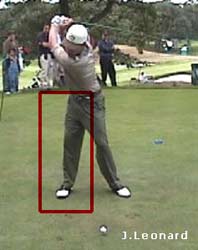
Like you have a door-stop wedged on outside of back foot.
|
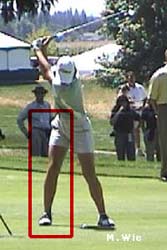
A straight "looking" yet always bent back leg, helps swing balance going forward.
|
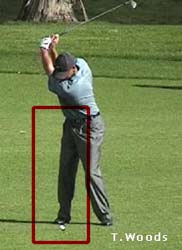
Feel more up than down.
|
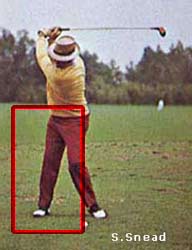
Sam had the best back leg action.
|
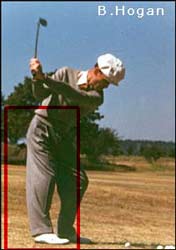
leg and knee bend is ready for forward motion.
|
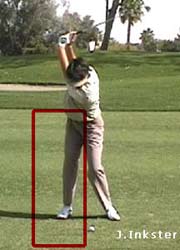
30% is probably the most weight the leg should absorb.
|
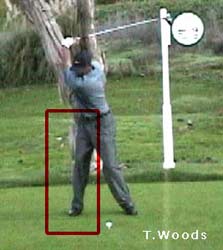
It assists in the swing transitions.
|
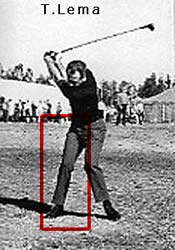
Some rely on leg more than others.
|
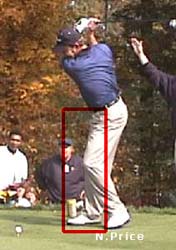
Your Head is center of your shoulder turn.
|
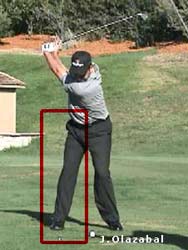
Leg will help keeping Shoulders loose, greased up, relaxed.
|
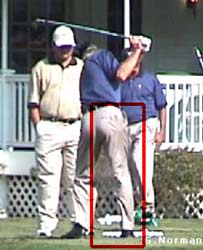
Some lean towards target, some less so.
|
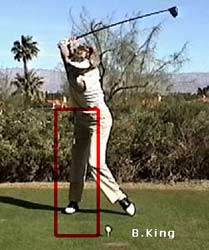
Front/left knee often bends towards right,maintaining the center of gravity.
|
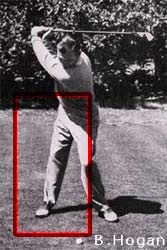
Picture a steady leg so your head stays steady.
|
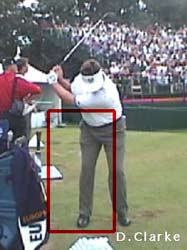
Leg looks the same on all size swings.
|
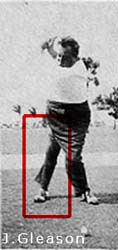
|
Here is:
a straight "looking" right leg,
and it looks almost "wooden",
weight transfer pressing downward,
good center of gravity.
How relaxed that back leg was ...is anyone's guess.
|
Return to Helpers lists |
Impact vs Address |

|
Here, student Brian Krigmont demonstrates how the shaft starts out in what appears (mind's eye) to be perpendicular to the ground position, returns at impact with what appears as a forward lean of the shaft, which makes the clubface slightly open. The ball stays on the face until the shaft has returned to a different more forward perpendicular position. The club face should now be somewhat square to the target at separation when the ball leaves the club face.
|

|
Notice the lines that I had placed on the swing plane board, a hip swing plane board. The longer the ball stays on the club face, the more control (and distance) we will have to our shot making. Happens real quick during impact, so quick it’s hard to believe. Trust me however, on your good shots, it is happening.
|

|
Often just visualizing the geometry (lines of the different shaft positions) can be a good practice thought. Get in front of a mirror and watch yourself swing in very slow motion. Where else would you want the shaft to be?
The club is built with a forward lean to it anyway, it’s telling you to: “use me the correct way…….please.”
|
Return to Helpers lists |
|

